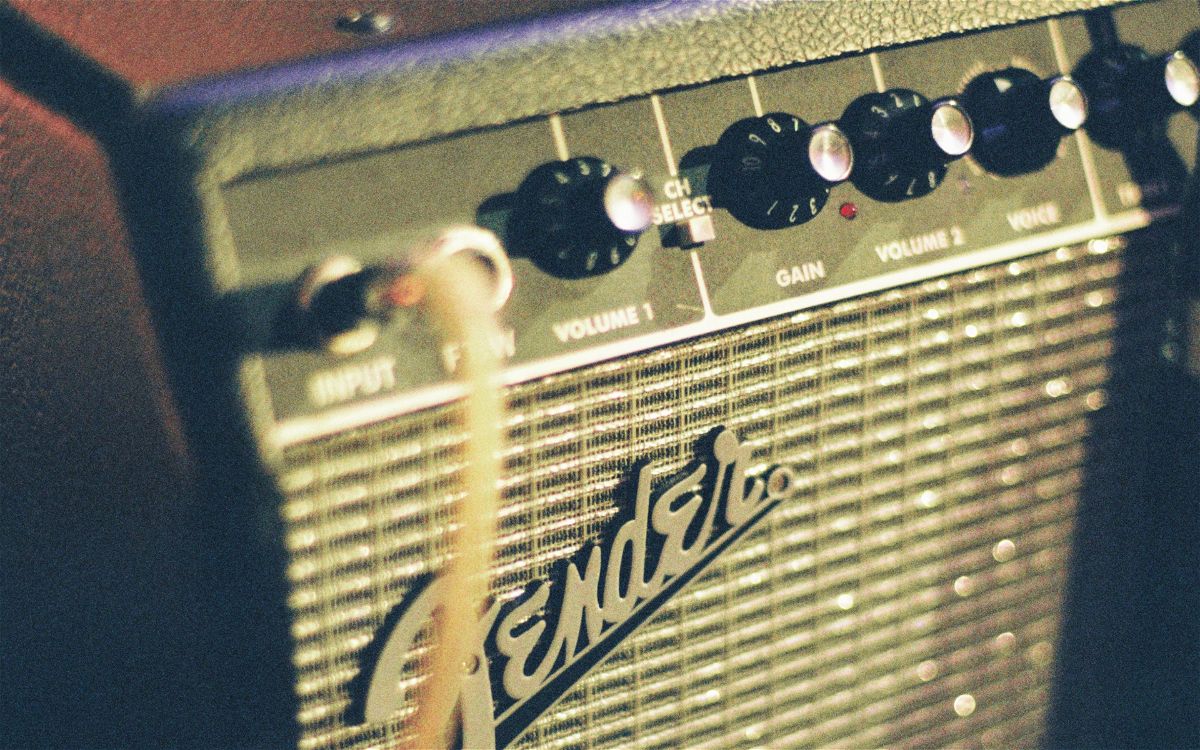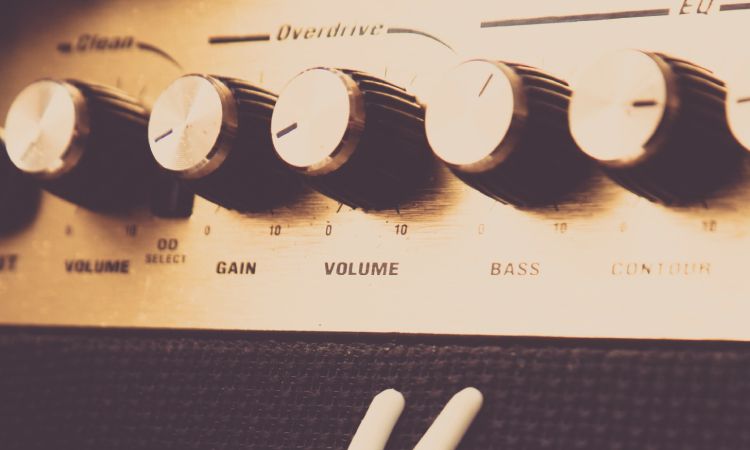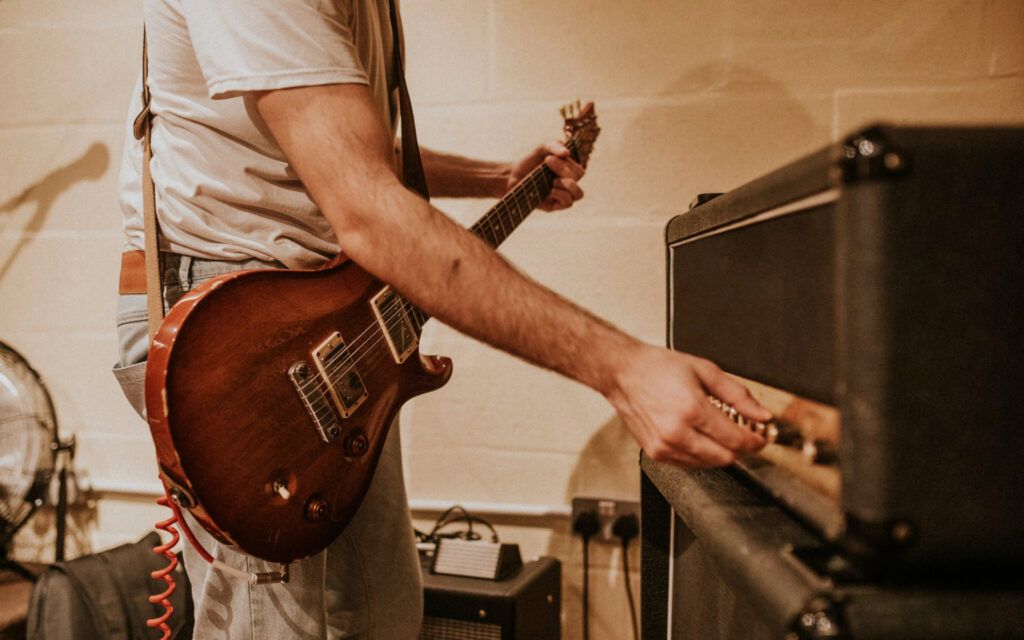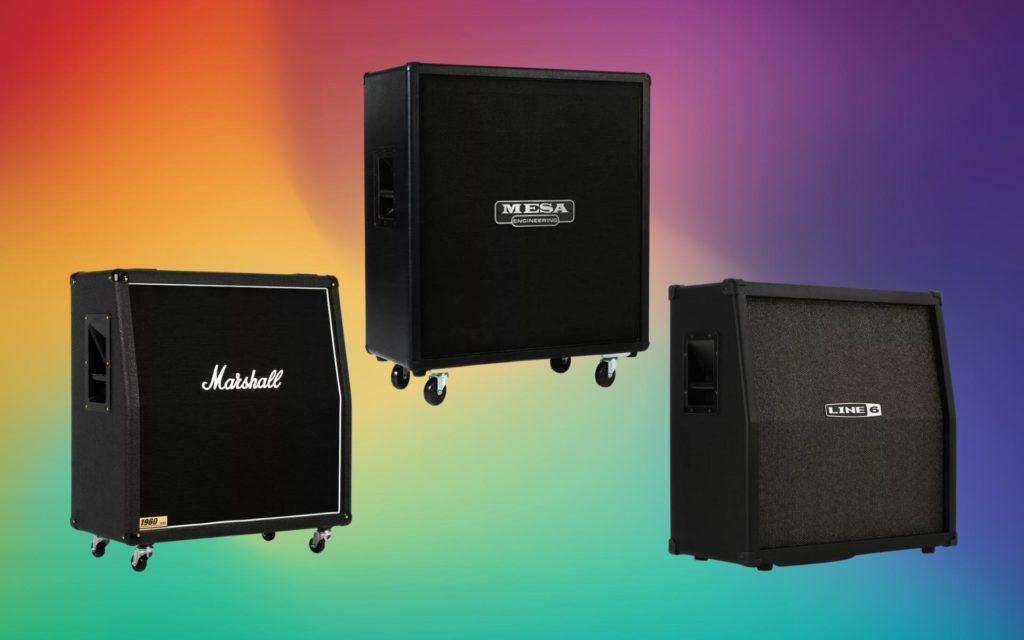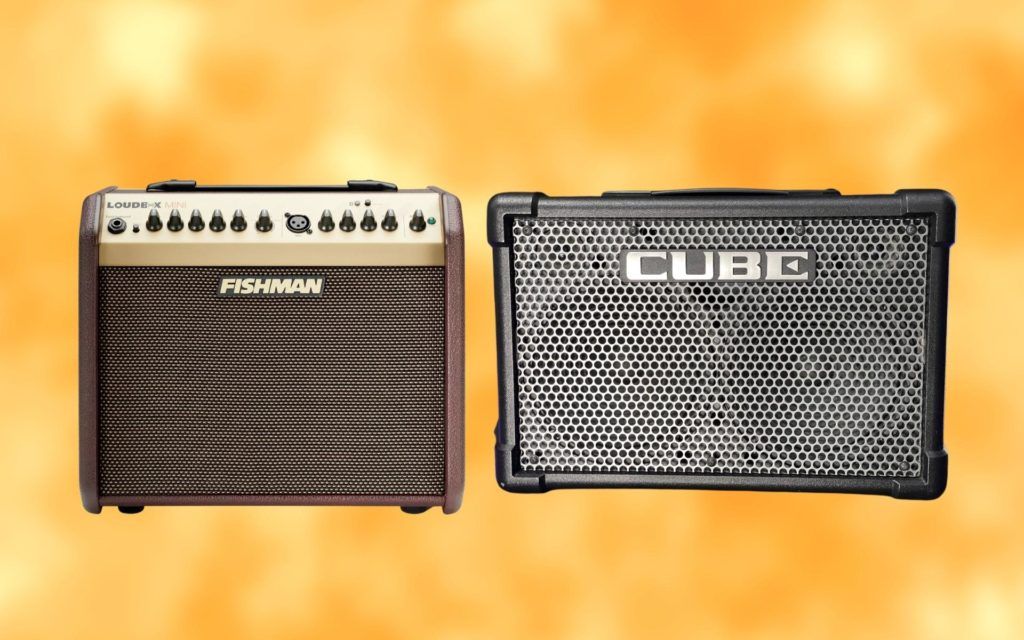When using a guitar amplifier, one of the main settings you are likely to use is called ‘gain’. Yet, despite its importance, many people are unsure of what amplifier gain actually is and how it is used. In particular, there is often confusion about gain vs volume and how these two settings differ from one another.
This confusion is easy to understand because gain and volume do have similarities. Nevertheless, there are also some crucial differences too. In this article, we attempt to answer the following questions: what is gain on an amp? What does gain do on an amp? How does gain differ from volume? And how do you set gain on an amp, to optimize your sound?
Understanding Amps: Preamp and Poweramp Stages
So, to start with, what is gain on a guitar amp? First, it is useful to understand how an amplifier actually works. Before you actually hear it, your guitar’s sound goes through two main stages: the preamp stage and the poweramp stage.
The preamp stage centres around amplification of the electrical signals from your guitar. Gain belongs to this stage and describes how ‘loud’ the signal is before it is processed. Gain may also be referred to as ‘drive’ and a high level of drive produces ‘overdrive’, which is commonly known as distortion.
Meanwhile, the poweramp stage is the stage that occurs after the electrical signal is processed, and the concept of volume belongs in this phase of the signal’s journey. If the preamp stage is about creating the overall makeup of your sound, the poweramp stage is more about how strong that sound is.
Another way to think of this is as follows: gain is mainly concerned with the decibel input for your guitar and amplifier setup, whereas volume is concerned with the decibel output from your guitar and amplifier.
Gain vs Volume: What is the Practical Difference?
Now that you have a basic understanding of how amplifier gain and volume differ from one another in a theoretical sense, it is important to take this a step further and consider the practical differences. What does gain do on an amp? Understanding the answer to this question can be important for getting the most out of your guitar.
As stated, the gain setting is a control for how hard you push the preamp stage. Essentially, it can be thought of as a control for tone and sound clarity, rather than a direct control for how loud the final sound is to you. In other words, your gain setting determines how clean or dirty your final mix is.
With that being said, a high gain setting can result in a change to the final volume of the mix. This is why gain is sometimes mistakenly thought of as a second volume setting. While extra volume is a consequence of adjusting your gain setting, it is not the main purpose, and raising the gain setting will also add a ‘dirtiness’ to the tone.
By contrast, volume is a control for the output channel and refers to how loud the final sound is. A low volume setting will result in a quieter sound, while a high volume setting will result in the final mix being louder. Even if your gain setting is set to the minimum setting, you can produce a loud final mix by turning the volume up.
How to Set Gain on an Amp: High Gain vs Low Gain
With an understanding of the preamp and poweramp stages, as well as an understanding of the practical differences between gain and volume on an amp, it is time to cover how to set gain on an amp. Of course, the precise settings you opt for here will depend on the type of sound you are looking for, but it pays to understand the basic principles.
First, it is worth stressing the high gain vs low gain point again. A high gain setting on your amplifier will result in the final mix having a dirtier tone and, at the highest levels, distortion will be present. On the other hand, a lower gain setting will be free from this kind of distortion, resulting in a cleaner tone.
Some styles of music are characterized by the presence of distortion. For instance, you might opt to have a high gain setting on your amp if you are playing blues, hard rock, punk rock, or heavy metal. However, many other styles of music tend to sound better with a cleaner tone, where there is less distortion present in the final mix.
Regardless of how high or low the gain is set on your amp, adjusting your volume will affect loudness. However, a high gain can result in the final mix sounding even louder still.
Most guitarists experiment with different levels of gain and different levels of volume, in order to create the sound they are looking for. It is also worth noting that distortion can also be introduced in other ways too, such as through the use of specialized distortion pedals.
Final Thoughts on Gain and Volume
When using a guitar amplifier, you are likely to notice settings for both ‘gain’ and ‘volume’ – although gain is sometimes labeled as ‘drive’ or ‘distortion’ instead.
Many guitarists are broadly aware of how these settings alter their sound, but they do not necessarily understand the fundamental difference between the two. As a result, it is quite common for people to think of both gain and volume as controls for loudness.
To be clear, volume is a control for how loud your final sound is, while gain can also have an influence on this too. A high gain and high volume output will usually sound louder than a high volume and low gain output will. However, gain is primarily an input setting, and volume is primarily an output setting.
Crucially, if volume controls how loud the sound is, gain can be thought of as more of a control for tone. A high gain setting will sound dirty and result in distortion, while a low gain setting will produce a smoother clean tone.

